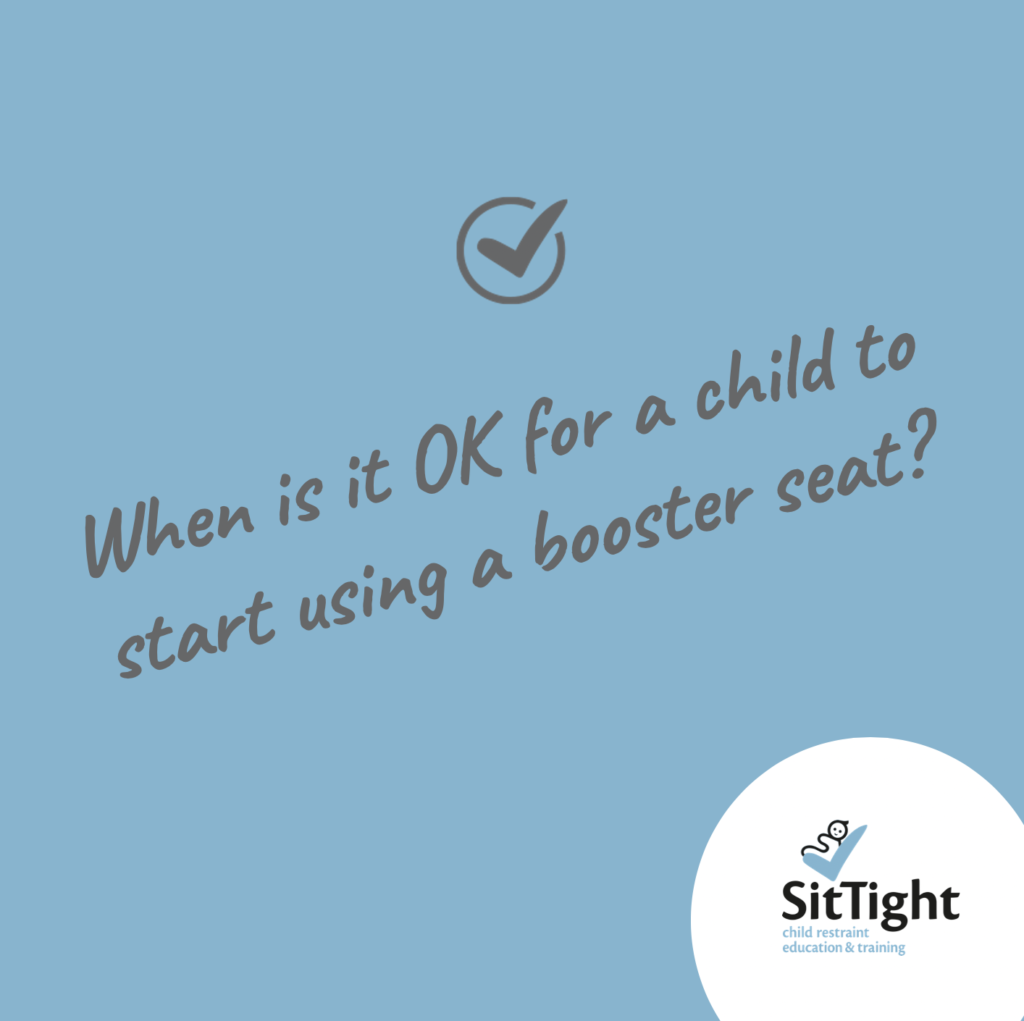
There is no absolute answer to when you should move your child from a harnessed child restraint into a booster seat. However, there are a few key things that you should consider before deciding to do so.
What is a “booster seat”?
First, let me clarify that when we talk about a “booster”, we are referring to a booster seat with a back. Another name for these is a “highbacked booster”. The alternative is a half booster, which is just the base, it does not have a back on it. This is not what we are referring to when we talk about a “booster”. We will look at “half boosters” in another post.
The purpose of a booster seat is to lift the child into a position which ensures the vehicle seat belt fits them safely, and to provide side-impact and head protection.
1. Check Behaviour & Maturity
Like all child restraints, booster seats have minimum and maximum limits that a child must fit within before they can use the seat. But, before we touch on these, the very first thing to consider is the behaviour and maturity of your child.
If you cannot be sure that your child will sit still for the duration of the journey, and if there is any chance that they will undo the seatbelt, then they are not ready to transition to a booster.
Once you are satisfied that they are mature enough to sit still and leave the vehicle seatbelt buckled, then you’re able to move to the other considerations.
2. Check Entry Requirements for the Booster Seat
First, check the minimum entry requirements of the booster – is your child past the minimum weight and/or height and/or age limit allowed to use the seat? If they do not meet any of these limits, the booster is not appropriate for them. They cannot use it.
It’s also important to know that the minimum limits on booster seats often allow a child to move into a booster far too soon, well before it is safest for them to do so. Remember, just because it is permitted, doesn’t mean it is safest.
As a guide, and this is only a guide, I would be unlikely to consider putting a child in a booster seat until they are at least 18kg AND 4.5 to 5 years old.
3. Check Seat Belt Position
Finally, when your child sits in the booster with the seat belt routed through the belt guide in the headrest and the lap portion running underneath the armrests (if there are any) your final check must be:
- The shoulder belt sits on the shoulder safely between the neck and outer shoulder. It must not be resting on or across the neck, and it must not be falling off the shoulder.
- The lap belt sits low on their body, across the top of the child’s thighs. It must not lie across their abdomen.
If the vehicle belt does not sit as we’ve described here, then the child does not safely fit the booster and must not use it. This is the case even if they fit within its allowed weight, height or age limits.
Don’t rush to move your child into a booster seat. Keep them in a harnessed seat until you’re sure they can safely fit a booster as we’ve described here.
If you have any questions on this post or need any other car seat advice, feel free to contact us at SitTight. Alternatively, you can find us on Facebook and Instagram. If you would like to make contact with your local child restraint technician, you will find a nationwide list here.